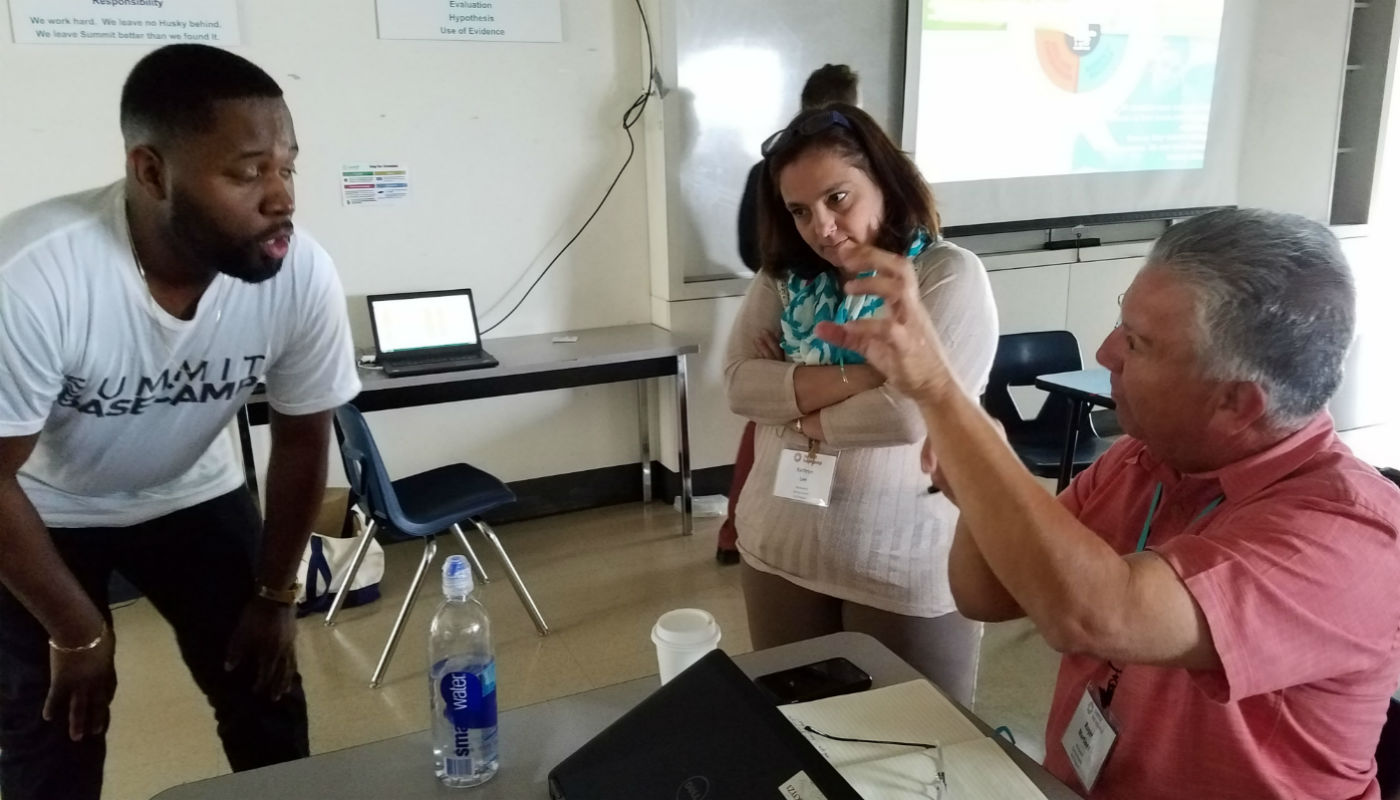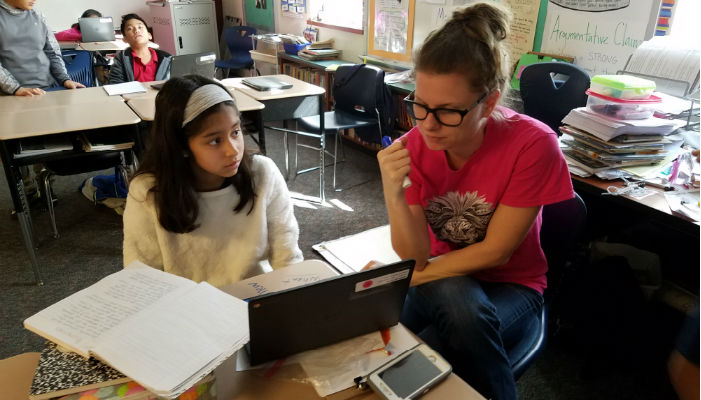
I’ve been an instructional coach for four years at Westwood Elementary, a Title I campus with more than an 80% bilingual population in the metropolitan Houston area. Currently, I am heading into the third year of our implementation of Summit Learning Program and I monitor its growth.
Our faculty has learned a lot about how to prepare for and implement Summit Learning at our school. I’d like to share what we’ve learned, so others find success at their own schools.
Lesson from Year One: Prepare for the Unknown
Our first year as a 5th grade Summit Learning pilot campus was challenging. We started with a great team — our grade had five classroom teachers and one instructional specialist, facilitating about 110 students with diverse needs. There were two ESL and three bilingual teachers responsible for four content areas.
Even so, we learned so many new things that we incurred a considerable implementation dip, or a slowing of performance and confidence, as we met teaching innovations that required us to build new skills and new understanding.
Looking back, I realize that our team did not adequately prepare for a paradigm shift in mindsets, institutional practices, and the removal of traditional barriers among our teachers and students.
We believed conquering the technology of the Summit Learning Platform was our most significant task. We were wrong!
Because we were focused so closely on the Platform, we didn’t adequately prepare for the importance of the Program’s crucial elements of success.
- We didn’t focus our scheduling priorities on the most effective use of time for our students.
- We also didn’t place a focus on explicitly teaching students Habits of Success or note-taking skills.
- Finally, we didn’t offer a lot of structure around Mentoring and goal-setting.
All of this prevented our students from growing as much as they could have.

Lesson from Year Two: Revamp and Redo
Year Two was an opportunity to step back, reflect on Year One, and begin the process of starting a new way of teaching and learning through Self-Direction. This is when we truly shifted from measuring our progress in fluency on the Platform (the technology) to adoption of the instructional model (the learning).
Year Two Changes
In our second year, we were lucky to keep all five 5th grade teaching positions, which together teach four courses. We elected to not add another grade to the Summit Learning pilot but to use the extra position to support areas of greater need for our students, like vocabulary development and classroom accommodations for students with special needs.
We also focused on revamping the curriculum to align with our state standards.
We used the Summit Learning Program curriculum to teach to specific Texas standards, and supplemented what Summit Learning provides with Texas Region IV support curriculum. We incorporated appropriate grade-level standards that differ between the Common Core and Texas standards.
Our goal was to ensure all state standards were addressed, content and activities were rigorous and relevant, and assessments attained the depth of knowledge required to meet state achievement outcomes. As such, our teaching team worked alongside a content specialist to modify and revise each and every Focus Area and assessment to fulfill all our goals.
We refined our schedule to support a more collaborative dynamic in the classroom. We changed our daily schedule to provide quality time in each course, to allow for more classroom discussions and hands-on activities.
The team created dedicated “Reads” and “Solves,” intervention times that allow for specialists at the school to support students with unique needs in reading and math. During this instruction time, we support students as they improve in specific topics that they’ve demonstrated they need extra help with.
Finally, we spent time learning and aligning as a team of teachers and a content specialist on how to grade Projects in conjunction with the Cognitive Skills Rubric. Many discussions and debates occurred in the attempt to align around a common rubric. The practice proved necessary to ensure all teachers had the same expectations and learning outcomes for the students in the program.
Year Two Outcomes
We improved our outcomes in grade-level math and reading standard scores more than 15 percentage points from our Year One results:
Year One:
- 49% of students met grade-level Reading standards
- 38% of students met grade-level Math standards.
Year Two:
- 65% of students met grade-level Reading standards
- 74% of students met grade-level Math standards.
The team attributes these increases in student achievement to our focus on developing student Self-Direction via Mentoring and goal-setting.
Our state achievement assessment scores were the manifestation of the changes made, but we didn’t see progress in individual student growth as leaders of their own learning.

Preparing for Year Three: Focus on Self-Direction
In our third year of Summit Learning, we hope to see greater student participation by the voicing of their desires and needs throughout the learning process.
We want students to understand themselves as learners and freely share ideas and thoughts about the content and activities they’re working on.
We aspire to see students initiating projects of their own to demonstrate their depth of knowledge. We want more student engagement in the classroom.
Practical Plans for Year Three
When I reflect on why we actively sought out this model, I am reminded that we want self-directed learners who are prepared for their next steps in life, with skill sets used in both academic and social settings.
So, we will spend Year Three purposefully developing Mentoring and goal-setting procedures for our students.
We did not do this with fidelity in the past two years and that has prevented us from seeing our desired growth in student agency. Relationship-building has been shown through research, such as that performed by Mark and Christine Boynton, to be a key factor in student learning and development.
- Provide Professional Development: As part of our investment in building stronger relationships with our students, we will provide teachers intentional professional development around effective Mentoring. We’ll dedicate some of our professional development time to role-play student needs using scripts. We’ll also support the intentional improvement in student-teacher relationships through classroom observations and student case studies that focus solely on the effectiveness of Mentoring.
“SMART” goals stand for Specific, Measurable, Attainable, Relevant and Timely.
- Enact SMART Goals: Students need to know how they learn. This helps them to decide what tools and resources will work best for their own learning. To support that, we will teach them to set individualized goals with the help of their instructors and mentors oriented toward a predetermined outcome, and use the tools and resources that work best for them to achieve those goals. These goals demonstrate the student’s knowledge and give them a clear path to succeed in both in their final grade demonstration of mastery.
- Refine Curriculum: Finally, we will continue refining the curriculum to address changes in standards and student needs.
Motivation for the Year Ahead
We seek continuous improvement, not a silver bullet. It may take several years to change our instructional practices and pedagogy. We understand this is hard work, which requires a collaborative team. We are attempting a paradigm shift needed across all facets of education.
Read more firsthand experiences of Summit Learning educators leading change at their schools on the Summit Learning Blog.

